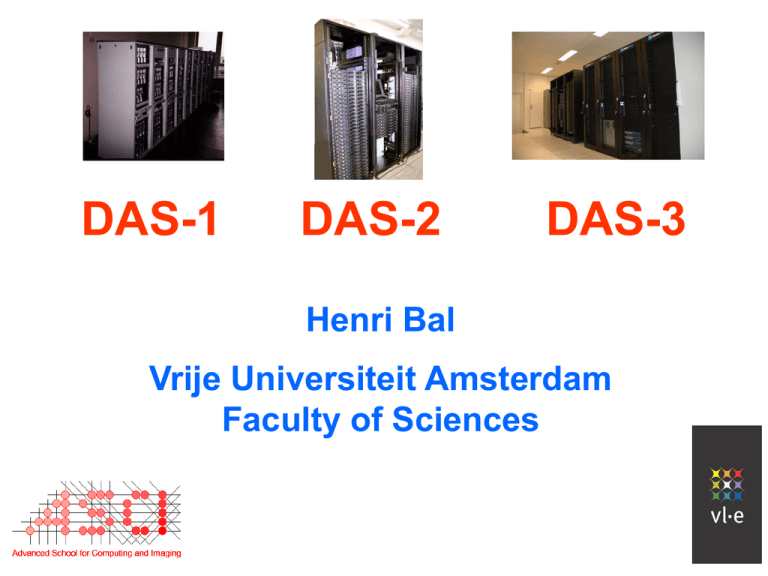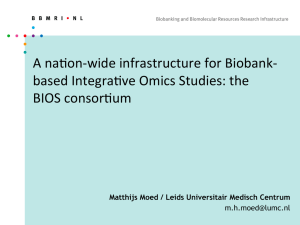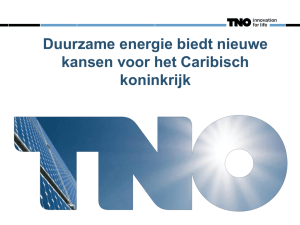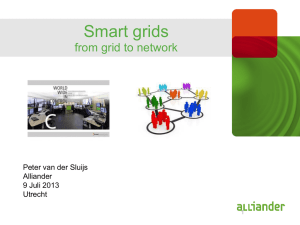das3-bal - Department of Computer Science
advertisement

DAS-1 DAS-2 DAS-3 Henri Bal Vrije Universiteit Amsterdam Faculty of Sciences Outline • • • • Introduction DAS-1, DAS-2, DAS-3 systems Impact of DAS Collaborations with - VL-e - SURFnet - Grid’5000 • New users Distributed ASCI Supercomputer • Joint infrastructure of ASCI research school • Clusters integrated in a single distributed testbed • Long history (10 years) and continuity DAS is a Computer Science grid • Motivation: CS needs its own infrastructure for - Systems research and experimentation - Distributed experiments - Doing many small, interactive experiments • DAS is simpler and more homogeneous than other grids - Single operating system - “A simple grid that works’’ Typical heterogeneous Grid Configuration 200 MHz Pentium Pro 64-128 MB memory 2.5 GB local disk DAS-1 (1997-2002) VU (128) Amsterdam (24) Myrinet interconnect BSDI => Redhat Linux 6 Mb/s ATM Leiden (24) Delft (24) Configuration two 1 GHz Pentium-3s >= 1 GB memory 20-80 GB disk DAS-2 (2002-2007) VU (72) Myrinet interconnect Redhat Enterprise Linux Globus 3.2 PBS => Sun Grid Engine Amsterdam (32) SURFnet 1 Gb/s Leiden (32) Utrecht (32) Delft (32) DAS-3 Procedure • • • • • NWO proposal (ASCI, VL-e, MultimediaN), Sep’04 Funding from NWO/NCF, Apr’05 Steering group + implementation group European tender (with Stratix and TUD/GIS) Selected ClusterVision, Apr’06 • Optical wide-area network by SURFnet (GigaPort-NG project) dual AMD Opterons 4 GB memory 250-1500 GB disk More heterogeneous: 2.2-2.6 GHz Single/dual core nodes Myrinet-10G (exc. Delft) Gigabit Ethernet Scientific Linux 4 Globus, SGE DAS-3 UvA/MultimediaN (46) VU (85) SURFnet6 UvA/VL-e (40) 10 Gb/s lambdas TU Delft (68) Leiden (32) Performance DAS-1 DAS-2 DAS-3 # CPU cores 200 400 792 SPEC CPU2000 INT (1 core) 78.5 454 1445 SPEC CPU2000 FP (1 core) 69.0 329 1858 1-way latency MPI (s) 21.7 11.2 2.7 Max. throughput (MB/s) 75 160 950 6 1000 40000 Wide-area bandwidth (Mb/s) Outline • • • • Introduction DAS-1, DAS-2, DAS-3 systems Impact of DAS Collaborations with - VL-e - SURFnet - Grid’5000 • New users Usage of DAS • ~200 users, 34 Ph.D. theses • Clear shift of interest: Cluster computing Distributed computing Grids & peer-to-peer computing Virtual laboratories for e-Science Opening workshops • DAS-1 opening (1998): - only 1 talk (VU) about distributed computing • DAS-2 opening (2002): - only 1 talk (VU) about local computing • DAS-3 opening (NOW): - talks about grids, e-Science, optical networks, international embedding, distributed multimedia computing, P2P/gossiping, co-allocating Grid Scheduler Impact of DAS • Major incentive for VL-e 20 M€ BSIK funding - Virtual Laboratory for e-Science • Collaboration SURFnet on DAS-3 - SURFnet provides multiple 10 Gb/s light paths • Collaboration with French Grid’5000 - Towards a European scale CS grid? Grid’5000 VL-e: Virtual Laboratory for e-Science Some VL-e results • • • • VLAM-G workflow system KOALA scheduler (see Mohamed’s talk) Zorilla peer-to-peer system (see Drost’s talk) Java-centric grid computing (see demo) - Ibis: Grid communication library - Satin: divide&conquer on grids - JavaGAT: Gridlab Application Toolkit • Applications of Ibis, Satin, JavaGAT: - Automatic grammar learning (UvA) - Protein identification (AMOLF) - Brain image analysis (VUmc) SURFnet6 Groningen1 • 4 DAS-3 sites happen to be on Subnetwork 1 (olive green) Dwingeloo1 Sub network 4: Blue Azur Zwolle1 Amsterdam1 Subnetwork 3: Red Amsterdam2 Leiden Hilversum Enschede1 Sub network 1: Green Den Haag Nijmegen1 Utrecht1 Delft Rotterdam1 Dordrecht1 Subnetwork 2: Dark blue Breda1 • Only VU needs extra connection Den Bosch1 Source: Erik-Jan Bos Eindhoven1 Subnetwork 5: Grey Tilburg1 Maastricht1 Adding 10G waves for DAS-3 WSS WSS -> WSS -> split select select split WSS <- WSS <- G5 G5 G5 G5 • Amsterdam1 Amsterdam2 WSS -> WSS -> split select select split WSS <- WSS <- G5 G5 G5 G5 • • • G5 G5 UvA MultiMedian G5 G5G6 Delft G6 G5 GMD G5 Amsterdam3 G6 G6 VU GMD Leiden Leiden “spur” – hardwired connections G4 G4 G4 G4 Delft Delft G3 G5 G1 G1 G1 GMD G3 Delft G1 GMD G5 G3 GMD Den Haag Utrecht Delft G3 GMD GMD G9 G9 G9 GMD Hilversum GMD • Source: Erik-Jan Bos GMD G9 Band 5 added at all participating nodes WSS added for reconfigurability “Spur” to connect VU Full photonic mesh possible • Also see De Laat’s talk International grid experiments • Distributed supercomputing on GridLab - Real speedups on a very heterogeneous testbed • Crossgrid experiments - N-body simulations (astronomy) - Grid-based interactive visualization of medical images Grid’5000 Grid’5000 500 500 1000 500 Rennes Lyon Sophia Grenoble Bordeaux Orsay 500 500 500 500 500 Connecting DAS-3 and Grid’5000 • Optical 10 Gb/sec link between Paris and Amsterdam, funded by VL-e • See Cappello’s talk (and keynote @ CCGrid2007) Users of DAS-3 • ASCI, VL-e • MultimediaN - See MultimediaN talk + demo • NWO projects - StarPlane, JADE-MM, GUARD-G, VEARD, GRAPE Grid, SCARIe, AstroStream, CellMath,MesoScale, ….. • NCF projects (off-peak hours) New users • DAS is intended primarily for computer scientists from ASCI, VL-e, MultimediaN • How do we define “Computer Scientist”? • Need a light-weight admission test … Proposed test There are only 10 types of people in the world: Those who understand binary and those who don't. = Pass as Computer Scientist Source: Acknowledgements • • • • • • Lex Wolters Dick Epema Cees de Laat Frank Seinstra Erik-Jan Bos Henk van der Vorst • • • • • • NWO NCF SURFnet VL-e MultimediaN VU, UvA, TUD, Leiden • • • • • Andy Tanenbaum Bob Hertzberger Henk Sips Aad van der Steen Many others • • • • ASCI ClusterVision TUD/GIS Stratix Special acknowledgement …. • Reasons why DAS is ``a simple grid that works’’ • 1) simple, homogeneous design • 2) Kees Verstoep


